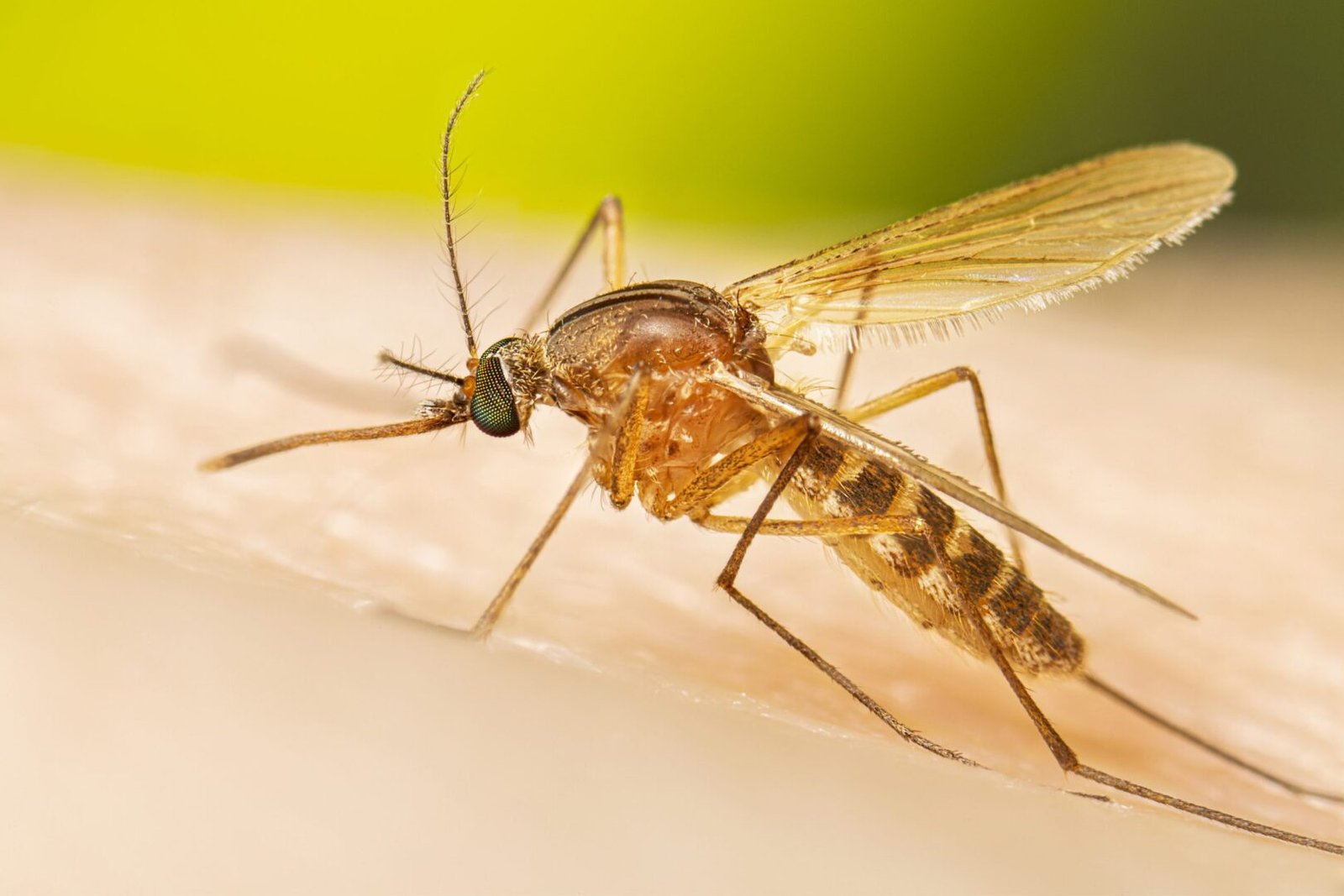Culex quinquefasciatus – commonly known as the Southern House Mosquito – is responsible for spreading several debilitating human diseases, including West Nile virus (WNV), lymphatic filariasis and Rift-Valley Fever virus. These mosquitoes have even played a tragic role in the decline of native forest bird populations in the Hawaiian Islands through the transmission of avian malaria.

The ʻIʻiwi, a native Hawaiian honeycreeper, is experiencing population decline due to widespread habitat loss and high susceptibility to avian malaria. Photograph: Hunter Masters
Currently there are very few effective tools to control the Southern House mosquito. With traditional tools such as insecticides becoming less effective due to rising resistance, and global factors like international trade and climate change aiding the spread of these mosquitoes, it is increasingly clear that we need to rethink our approach and explore new technologies.
At Keele University, our team aims to develop gene drive systems that could be applied to fight disease-carrying Culex mosquitoes. But there are knowledge gaps that need to be addressed. Thanks to a Springboard grant from The Academy of Medical Sciences we now have the resources to tackle these challenges. I will be leading a team working to create a comprehensive “map” of the genes of the Southern House Mosquito, by applying an advanced sequencing technology known as single-cell RNA sequencing.

Adult female Culex quinquefasciatus mosquito. Photograph: Centers for Disease Control and Prevention (CDC)
Gene drives promote the rapid spread of a selected genetic trait through a species via sexual reproduction over multiple generations. This technology is being investigated for its potential to control the spread of vector-borne diseases, by introducing genes in mosquitoes that for instance, reduce their ability to transmit a disease, or affect their ability to reproduce, therefore lowering their numbers. To design an effective gene drive system, we first need to know which genes we need to modify – and this research will help us better understand which genes are normally expressed in the reproductive cells of Culex quinquefasciatus.
By creating this map, we hope to contribute to the development of genetic vector control approaches that could complement existing tools and help safeguard human health and prevent further wildlife losses.
